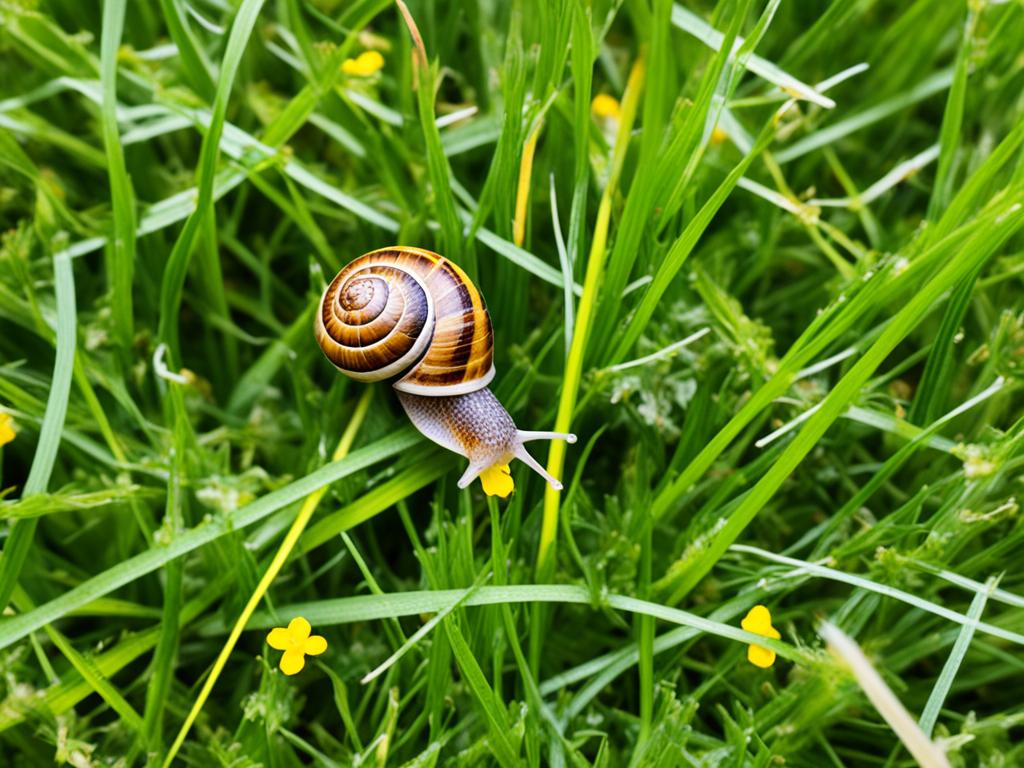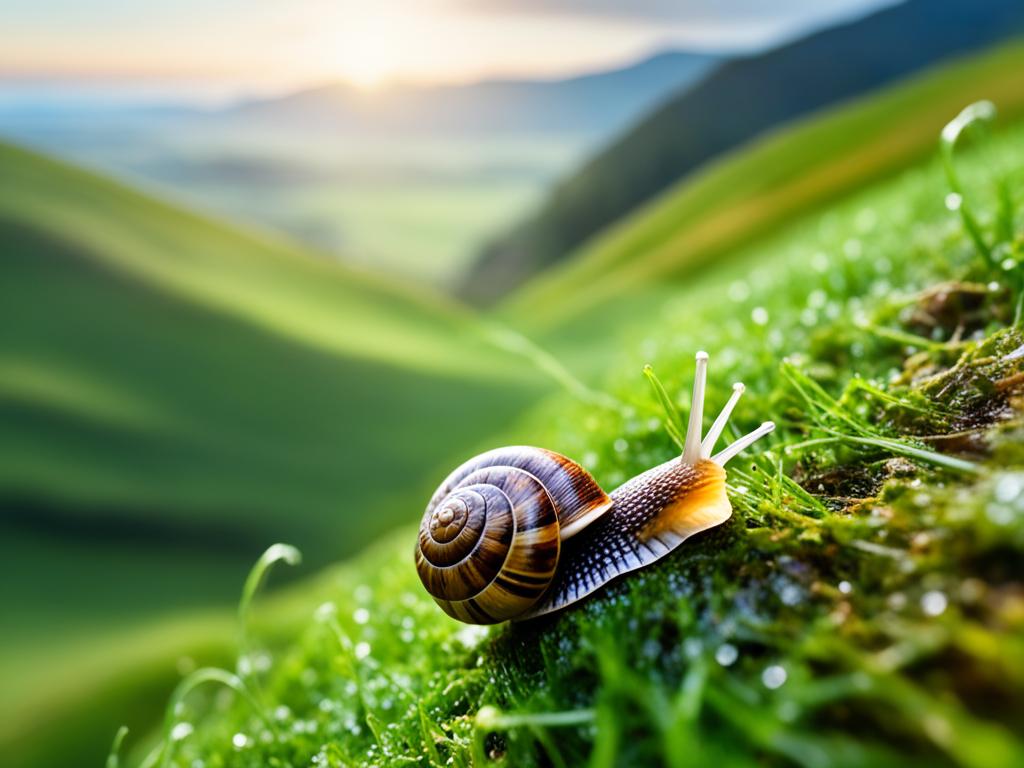Snails are fascinating creatures that carry their homes on their backs and exhibit unique locomotion habits. You might be surprised to learn that the average garden snail can travel anywhere from 5 to 40 feet in a single day, largely influenced by its species and the environmental conditions it encounters. When we explore how far a snail can travel in a day, it’s essential to consider various factors such as size, age, weather, and terrain. Based on data from studies, a snail can cruise at approximately 0.03 miles per hour, covering roughly 25 meters over 24 hours. Isn’t that amazing? This article delves into the daily journeys of snails, providing insights through various observations, showcasing their ability to navigate, and their surprising homing instincts. With this understanding, we can gain a better appreciation for these slow yet steady creatures and what they encounter throughout their daily voyages.
Table of Contents
Key Takeaways
- The average garden snail travels approximately 0.72 miles in a day.
- Snails can cover a distance equivalent to walking from one end of a small town to the other daily.
- In one year, snails can travel around 262 miles.
- Snails reach impressive speeds of just over one mph.
- The study of snails reveals fascinating behaviors including a strong homing instinct.
Understanding Snail Movement and Speed
Snails are fascinating creatures known for their unique mode of locomotion. They rely on a muscular foot to glide along surfaces, aided by a mucus secretion that forms a slippery slime trail. This combination allows them to navigate various terrains while protecting against dehydration and potential predators. Observing their movement offers insights into their everyday lives and travel capabilities.
Muscular Foot and Slime Trail
The muscular foot serves as the primary means of snail movement. It works by contracting and expanding in waves that propel the snail forward. The secretion of mucus, or slime, enhances this process by providing a smooth surface for movement and improving grip. This slime trail also has protective qualities, keeping the snail hydrated while deterring predators through its anesthetic properties.
Average Speed of Different Snail Species
Different snail species exhibit varying levels of speed. For instance, the common garden snail typically moves at an average speed of around 0.03 mph, allowing it to cover about 15-20 feet in a day under favorable conditions. Some snails achieve faster daily travel; for example, the Giant African Land Snail can travel up to 50 feet per day, thanks to its capability to reach speeds over 0.05 mph. The average snail daily travel distance varies significantly among the diverse species, revealing the wide range of their swimming abilities.
| Snail Species | Average Speed (mph) | Average Daily Travel Distance (feet) |
|---|---|---|
| Common Garden Snail | 0.03 | 15-20 |
| Giant African Land Snail | 0.05 | 50+ |
| Giant Ghana Land Snail | 0.17 | 300 |
In competitive scenarios, snails have been known to move at much slower speeds, with some recorded at 0.00086 m/s. Nevertheless, certain experiments show snails can reach a top speed of one meter per hour under ideal situations. Their speed plays a crucial role not only in their survival but also in their daily activities within their habitats.
How Far Can a Snail Travel in a Day
Understanding the daily snail traveling distance requires a closer look at the various factors influencing snail travel. While the average movement speed of snails is roughly 1 meter per hour, numerous variables affect how far a snail can realistically move in a day.
Factors Influencing Daily Travel Distance
Several dynamics dictate a snail’s snail daily journey length. Below are some of the key elements that come into play:
- Size and Age: Younger and smaller snails often exhibit higher activity levels, allowing them to cover greater distances.
- Environmental Conditions: Cool and damp weather enhances a snail’s mobility. Extreme temperatures, particularly heat, can significantly hamper their movement.
- Terrain: Smooth surfaces enable much easier travel. Conversely, rugged or steep terrains can create challenges, reducing the distance a snail travels in a day.
In summary, a combination of these factors influencing snail travel determines the potential distance a snail can travel in a typical day. Understanding these elements not only adds depth to our knowledge of snail behavior but also to their ecology.

| Factor | Impact on Daily Travel |
|---|---|
| Size and Age | Younger snails travel further than older ones. |
| Environmental Conditions | Cool and damp weather improves movement. |
| Terrain | Smooth surfaces facilitate longer distances. |
Environmental Influences on Snail Travel
The environment plays a crucial role in determining how far and fast snails can travel each day. Various factors such as the weather and terrain conditions can either enhance or hinder their movement. Understanding these influences helps in recognizing the limitations snails face in their daily quests.
Weather and Temperature Effects
In terms of snail travel climate, humidity is vital for sustaining movement. Snails thrive in damp conditions, often being most active during rain. The weather effects on snail movement show that dry or hot conditions can compel snails into a dormant state, drastically reducing their activity levels. Cooler nights and early mornings tend to encourage them to venture out, as these conditions help keep their bodies moist. Such temperature preferences emphasize the delicate balance snails must maintain for optimal movement.
Terrain Challenges
The type of terrain a snail encounters significantly influences its travel capacity. Smooth surfaces such as dirt or mud aid snail movement, allowing for easier gliding. Conversely, rough terrains, characterized by tree bark or rocky surfaces, create substantial snail movement obstacles that greatly slow progress. Studies on terrain impacts on snails reveal that vertical walls or steep inclines present some of the most challenging environments, often limiting their movement to mere inches per day under these circumstances.
Conclusion
Reflecting on the journey of snails reveals an intricate balance within our ecosystems. As I explored the summary of snail travel, it became apparent that factors such as species, size, and environmental conditions significantly influence their daily journey lengths. It’s fascinating to note that while a garden snail travels only about 10cm each day, their endurance and constant adaptations allow them to thrive despite challenges.
Understanding snail journey lengths not only highlights their slow pace but also their role in maintaining biodiversity. For instance, studies have shown that simply relocating snails by more than 20 meters from their home patches can effectively manage populations without the need for harsh deterrents. This encourages me to appreciate these creatures as part of a larger ecosystem rather than mere pests in a garden.
As we navigate the realities of gardening and wildlife management, I realize the importance of minimizing damage rather than seeking total elimination of snails. Recognizing the resilience and contributions of these gastropods is crucial as we strive to maintain a healthy environment for all species involved.
FAQ
How far can a snail travel in a day?
On average, a garden snail can travel anywhere from 5 to 40 feet in a single day, depending on various factors like species, age, and environmental conditions.
What is the average snail daily travel distance?
The average daily travel distance for different snails varies, but common species like the garden snail generally cover about 15 to 20 feet under favorable conditions.
What affects a snail’s daily travel distance?
Several factors can influence how far a snail can travel in a day, including its size, age, the weather, and the type of terrain it encounters.
What is the snail speed daily?
The speed of snails varies by species; for example, the common garden snail moves at approximately 0.03 mph while the giant African land snail can reach speeds of up to 0.05 mph.
Do snails travel further during certain weather conditions?
Yes, snails thrive in humid and damp conditions and are most active during rainy weather, which encourages them to travel more.
What are the challenges snails face in their daily movement?
Snails encounter challenges such as rough terrains and vertical surfaces, which can significantly hinder their movement, reducing the distance they can travel.
How far can a snail travel in a year?
If a snail travels an average of 20 feet per day, it could cover over 7,300 feet in a year, which emphasizes the slow yet steady nature of these creatures.

